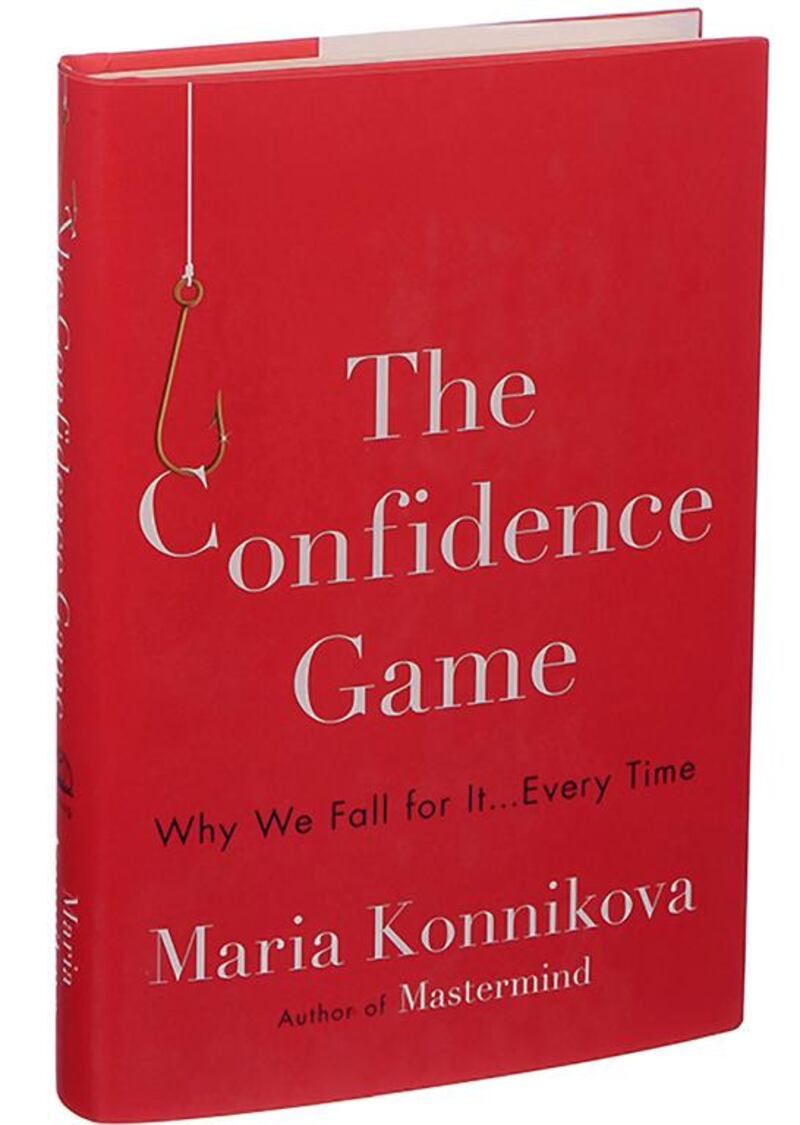The "aristocrats of crime" is how the journalist and psychologist Maria Konnikova extols con men in her book The Confidence Game.
“We shouldn’t forget that these are bad people who ruin lives,” she says. “But of course you have a grudging admiration for them because they’re really, really good at what they do. The name ‘con artist’ really does capture it. They’re artists and I have admiration for all artists.”
We all know of the classic cons – from Frank Abagnale (as played by Leonardo Di Caprio in Catch Me If You Can), to Bernie Madoff and Charles Ponzi's pyramid schemes.
Konnikova looks at why we fall for them and how different tricks work psychologically. The underlying problem, she says, is that we are naturally trusting as humans – and con men are extremely perceptive at reading their marks.
This form of “art” is only getting worse in the era of email, the internet, social media and apps. Konnikova reveals that consumer fraud in the United States has risen by more than 60 per cent since 2008; online scams have more than doubled.
According to the Federal Trade Commission, nearly one in 10 Americans has fallen victim to some consumer scheme – that’s nearly 26 million people in one country alone. In the UK, 58 per cent of households received fraudulent calls last year.
Social media apps that ask you to check in, wherever you go, are “heaven for a con artist”, Konnikova says. “You’re checking who you’re with, where, when, so I can start to get an insight into patterns and I can then fake knowing you so much better.”
Jigsaw identification – what you like on Facebook, what you ask for in an Amazon wish list – also give con men all the clues they need as to what trick you will fall for, former con man Mr Abagnale says. “What I did 50 years ago as a teenage boy is 4,000 times easier to do today because of technology. Technology breeds crime.”
Chapters detail the process and styles – the grifter and the mark, the play. But sadly the schemes referenced the most in the book, those of Madoff and Ponzi, are never actually examined – a jarring omission.
The Confidence Game: Why We Fall For It – Every Time, by Maria Konnikova, was published by Canongate Books in January.
q&a gaining trust starts scams
Suzanne Locke expands on what it means to be a con man:
Where does 'confidence (or con) man' come from?
The term “confidence man” was first used in the 1849 trial of William Thompson, who would ask passers-by in New York: “Have you confidence in me to trust me with your watch until tomorrow?”
What’s the oldest recorded con?
One of the biggest reported frauds took place in 1822. Scotsman Gregor MacGregor claimed he was a prince of Poyais, a fictional country in South America. He raised US$290,000 from investors, which he turned into $1.9 million in his lifetime ($5.2 billion today) and convinced 1,000 Scotsmen to sail there to settle. Just a third of them survived. MacGregor fled to France then Caracas, where he lived out his days.
What about Ponzi schemes?
This is where you take from Peter to pay Paul, says Maria Konnikova in The Confidence Game: “All well and good while you have a steady supply of capital. Not so good if that supply dries up.” Trust is the key factor: Bernie Madoff (the Wall Street broker whose asset management arm was a massive Ponzi scheme) went undetected for 20 years until 2008.
Who is most likely to fall for such a con?
According to Konnikova’s book, the psychologists Karla Pak and Doug Shadel found that the people likely to fall for Ponzi schemes were likely to be well-educated, older men who made at least $50,000 a year.
business@thenational.ae
Follow The National's Business section on Twitter





